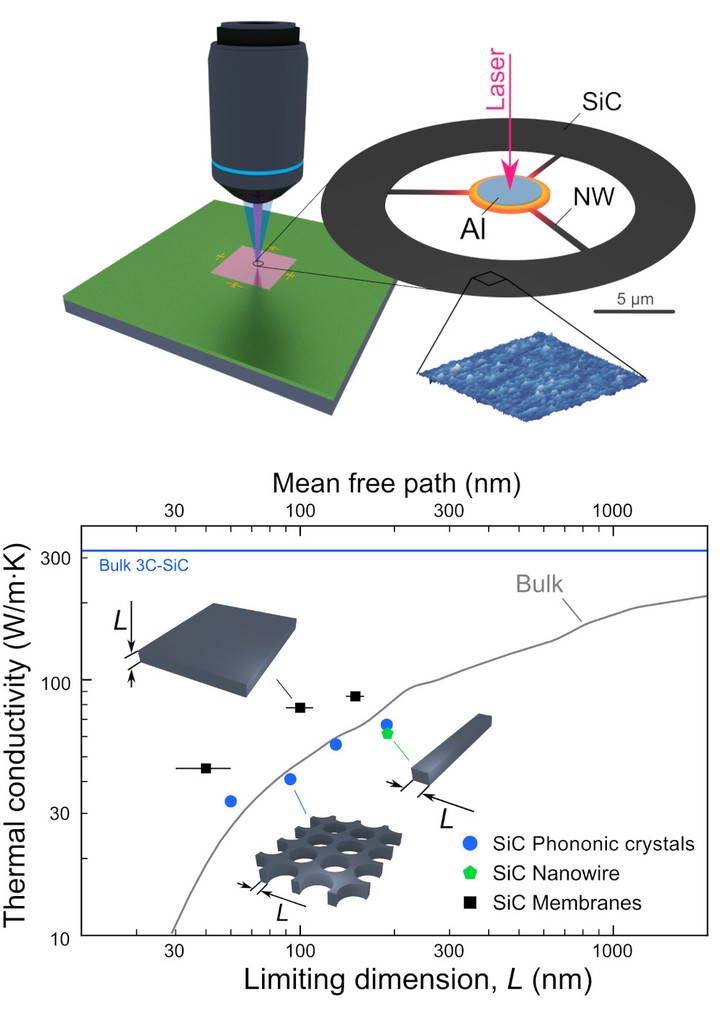Nanoscale limit of the thermal conductivity in crystalline silicon carbide membranes, nanowires, and phononic crystals

Abstract
Silicon carbide (SiC) aims to be the number one material for power microelectronics due to its remarkable thermal properties. Recent progress in SiC technology finally enabled the fabrication of crystalline SiC nanostructures. Yet, the thermal properties of SiC at the nanoscale remained overlooked. Here, we systematically study heat conduction in SiC nanostructures, including nanomembranes, nanowires, and phononic crystals. Our measurements show that the thermal conductivity of nanostructures is several times lower than in bulk and the values scale proportionally to the narrowest dimension of the structures. In the smallest nanostructures, the thermal conductivity reached 10% of that in bulk. To better understand nanoscale thermal transport in SiC, we also probed phonon mean free path and coherent heat conduction in the nanostructures. Our theoretical model links the observed suppression of heat condition with the surface phonon scattering, which limits the phonon mean free path and thus reduces the thermal conductivity. This work uncovers thermal characteristics of SiC nanostructures and explains their origin, thus enabling realistic thermal engineering in SiC microelectronics.
NPG Asia Materials 14, 35 (2022)